Categories
- Argentina
- Chile
- Antarctica
- Easter Island
- Falklands (Malvinas)
- Bolivia
- Peru
- Uruguay
- Paraguay
- Brazil
- Venezuela
- Colombia
- Ecuador
- Galapagos
- Panama
- Costa Rica
- Cuba
- Nicaragua
- Honduras
- El Salvador
- Guatemala
- Belize
- Mexico
- Latin American Xmas
Pages
- Street Art of Buenos Aires
- A week in Buenos Aires
- The Jesuit Missions in South America
- Contact Us
- Map of Central America
- First week in Latin America – October 2009
- Home Page
- Map of South America
Archives
- October 2011 (3)
- September 2011 (9)
- August 2011 (10)
- July 2011 (7)
- June 2011 (6)
- May 2011 (11)
- April 2011 (10)
- March 2011 (4)
- February 2011 (5)
- January 2011 (6)
- December 2010 (6)
- November 2010 (4)
- October 2010 (8)
- September 2010 (5)
- August 2010 (7)
- July 2010 (5)
- June 2010 (6)
- May 2010 (6)
- April 2010 (7)
- March 2010 (6)
- February 2010 (9)
- January 2010 (4)
- December 2009 (8)
- November 2009 (5)
- October 2009 (2)
Near Puebla
03rd August 2011
Cholula, south west of Puebla [16] was once a large Pre Hispanic religious centre dating from 500 BC. The original occupants disappeared around 600 AD and subsequent civilizations moved in and built over the existing pyramid. What appears to be a large hill in the centre of town was in fact the widest pyramid ever built, measuring 400 x 400 metres at the base. Atop sits the Santuario de Nuestra Señora de los Remedios from where the snow capped active Volcán Popocatepétl can be clearly seen. In 1519, here in the sacred city of Cholula, conquistador Hernán Cortés seized the Aztec leaders and 3 hours later at least 3000 Indians were dead and the city was on fire.
.
Tlaxcala [17], north of Puebla, and the warrior states surrounding it were once fierce allies of Cortés against the Aztecs. Today Tlaxcala is a pretty and quiet colonial town, worth a couple of days. The nearby site at Cacaxtla contains some of the finest frescos depicting battle scenes in vivid blues and reds. The frescos were preserved under layers of the pyramids and only discovered in 1994. On the next hill, pyramid Xochitécatl was the ceremonial centre. These cities peaked around 600 AD to 900 AD, but were abandoned by 1000 AD. At a nearby food stall we sampled the seasonal corn fungus on tortillas with barbequed cactus for lunch – we liked the earthy taste of the fungus.
.
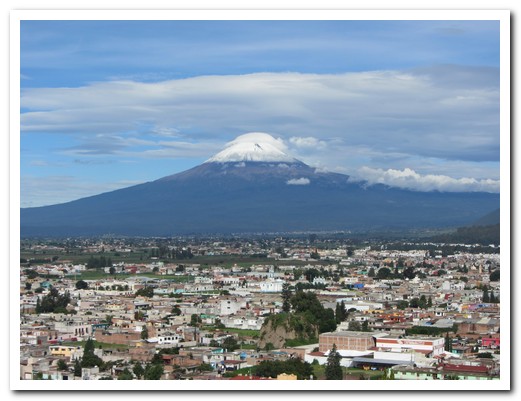
Active snow capped volcano Popocatepétl looms over Cholula
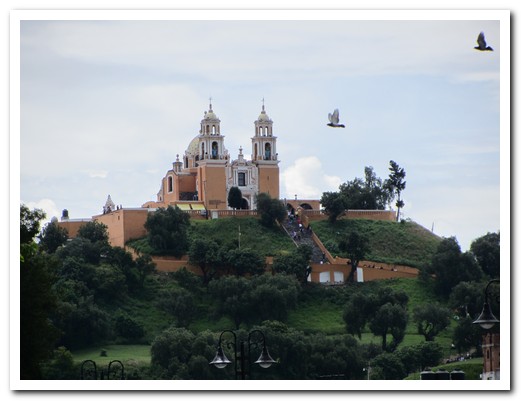
Santuario de Nuestra Señora de los Remedios sits on top of a huge pyramid

Looking down on Cholula ...
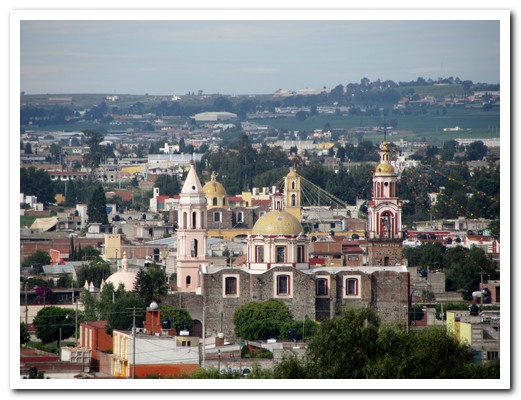
... from on top of the pyramid
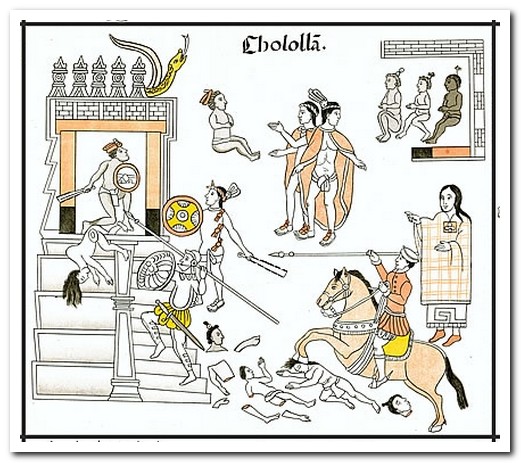
The Lienzo (Canvas) de Tlaxcala, painted 1552, shows the massacre of Cholula
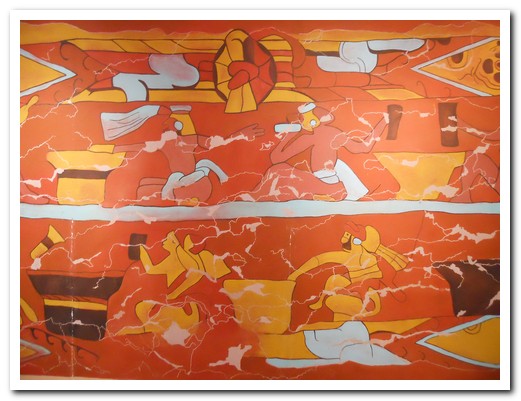
Mural of the drinkers found on a temple inside the pyramid
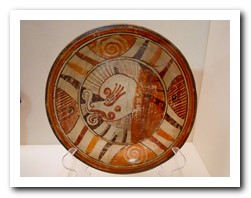 |
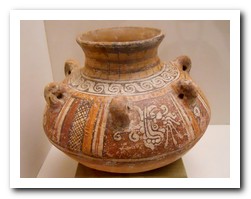 |
| Cholula pottery from about 1000 AD |

Moorish looking Convento San Gabriel is one of the oldest in America, 1549

Capilla Real with 49 domes, late 16 th century
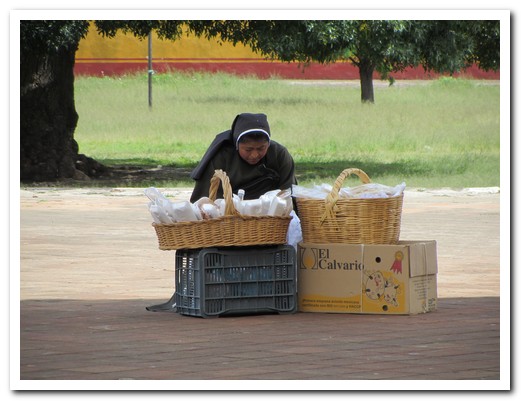
Nun selling delicious biscuits outside the Convento

Copa de Oro (glass of gold) cider from Cholula - tastes great

Hill top Santuario del la Virgen de Ocotlán in Tlaxcala - one of México´s important religious sites

San Nicolas Chapel, Tlaxcala

Templo de Santisima Trinidad

Paroquia San José
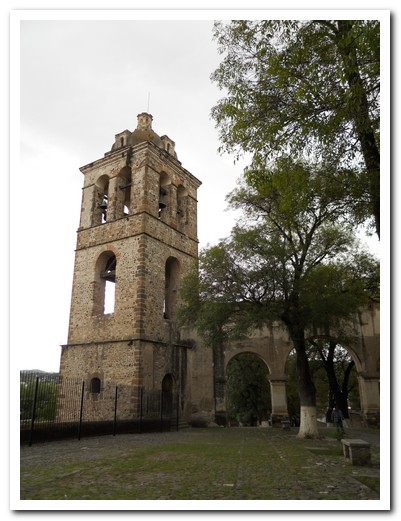
Tower of the Tlaxcala Cathedral
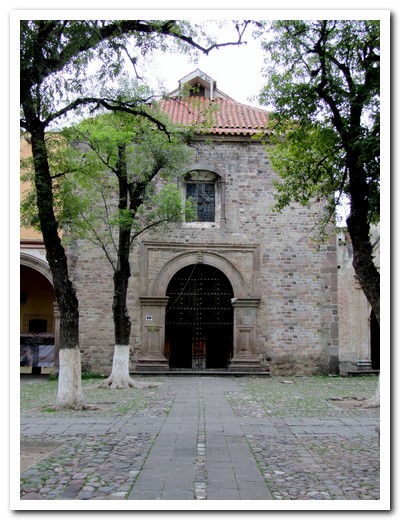
The Cathedral (1537) has an austere Franciscan facade ...

... inside the most beautiful wooden Mudéjar ceiling ...
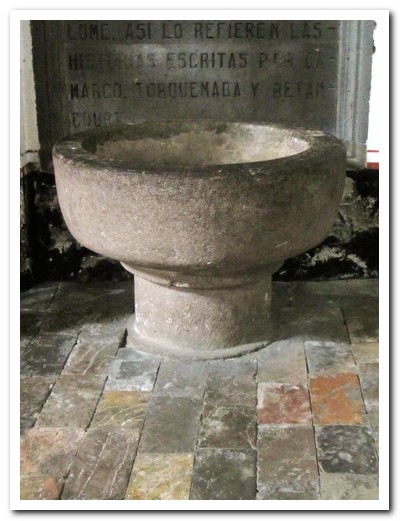
... and the font where the Lords of Tlaxcala were baptised in 1520
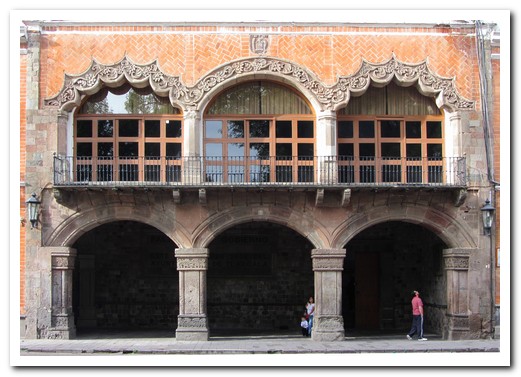
Moorish style doorway

Tlaxcala´s Plaza de Torros (Bull Ring)
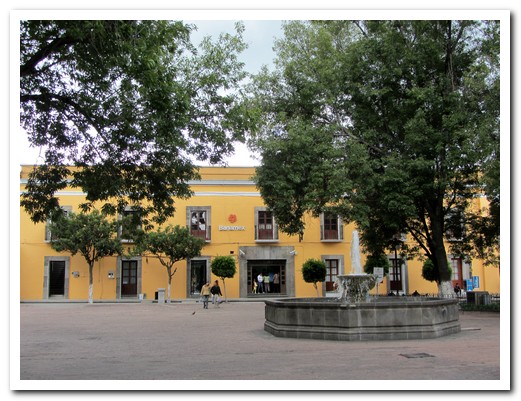
Shady plaza in Tlaxcala

Battle mural of 2 warrior groups, dating before 700AD ...
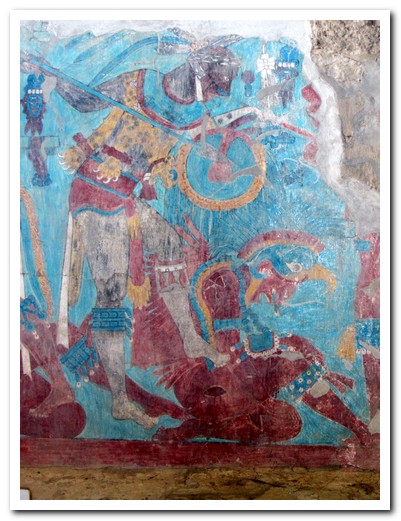
... at Cacaxtla

Eagle warrior mural, Cacaxtla

Ornate urn from the site was used to store seeds
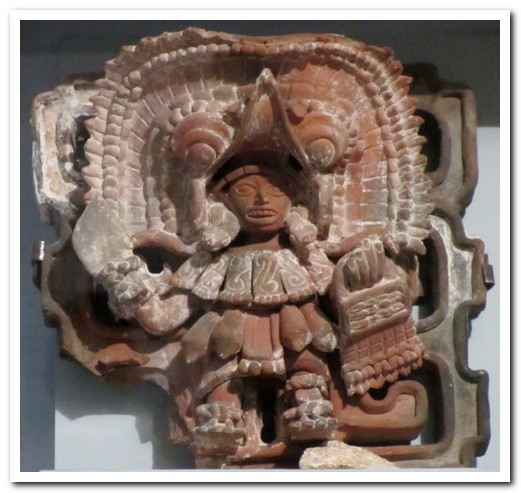
Clay sculpture
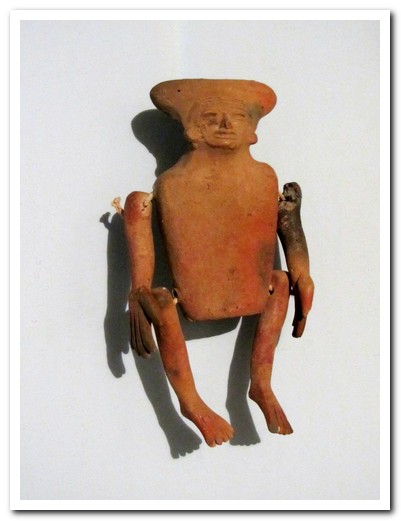
Clay figure with moving arms and legs from Cacaxtla
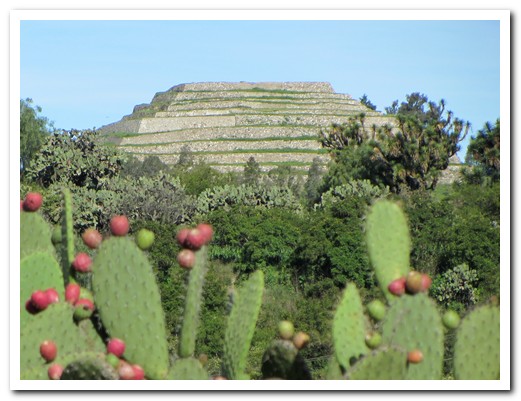
Pyramid on the next hill - the Xochitécatl site
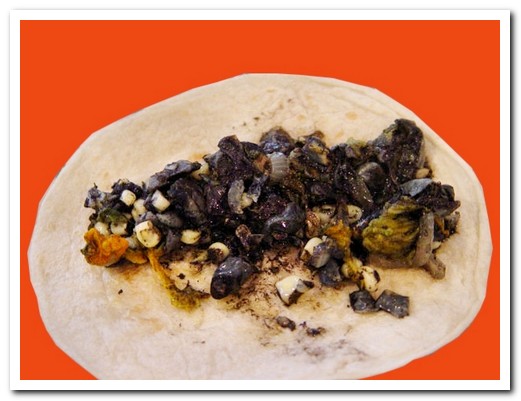
Lunch of corn fungus on tortillas